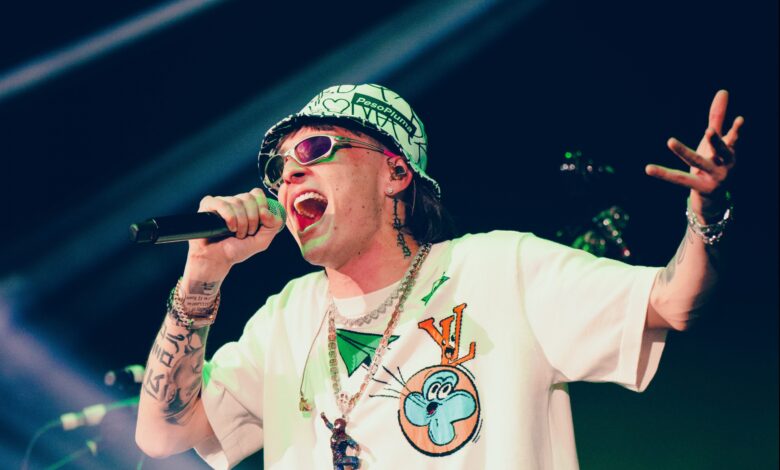The Fascinating World of Peso Pluma Height

When it comes to the world of combat sports, one of the most intriguing and captivating aspects is the weight class known as “peso pluma” or featherweight. This division is defined by a specific height range, and understanding the nuances of peso pluma height can provide valuable insights into the dynamics of these high-intensity matchups.
Peso Pluma Height: The Ideal Range
The peso pluma, or featherweight, division is typically defined by a height range of 5’4″ to 5’7″ (162.5 cm to 170.1 cm). This height range is considered the ideal for fighters in this weight class, as it allows for a balance of power, speed, and agility.
• Fighters within this height range are often able to maintain a lean, muscular physique while still possessing the necessary strength and explosiveness to compete at the highest levels.
• The compact stature of peso pluma fighters also enables them to generate significant force from their strikes, making for thrilling and action-packed bouts.
• Additionally, the height advantage or disadvantage can play a crucial role in the tactical approaches and strategies employed by these athletes.
The Importance of Peso Pluma Height in the Ring
In the fast-paced world of featherweight combat, the height of the fighters can have a significant impact on the outcome of a match. Here are some of the key ways in which peso pluma height influences the dynamics of these battles:
- Reach Advantage: Taller fighters within the peso pluma range may have a slight reach advantage over their shorter opponents. This can allow them to control the distance and land strikes from a distance, making it more challenging for their opponents to close the gap.
- Leverage and Power: Shorter fighters, on the other hand, may be able to utilize their lower center of gravity to generate more power in their strikes and takedowns. This can be particularly effective in close-quarters exchanges, where they can leverage their height and body positioning to their advantage.
- Footwork and Mobility: Peso pluma fighters, regardless of height, often possess exceptional footwork and agility, allowing them to move in and out of range with lightning-fast reflexes. This can be a crucial factor in neutralizing any height-based advantages and creating openings for their own attacks.
- Grappling and Clinch Work: In the clinch and on the ground, the height differential can play a significant role in the fighters’ ability to control position, apply submissions, and utilize their weight and leverage effectively.
The Diverse Talents of Peso Pluma Fighters
The peso pluma division is renowned for its diverse array of talented fighters, each with their own unique styles and approaches to the sport. From explosive knockout artists to technical masterminds, the featherweight class is a true melting pot of skills and personalities.
• Some peso pluma fighters may excel in the striking realm, utilizing their speed, precision, and power to overwhelm their opponents with a barrage of punches, kicks, and elbows.
• Others may be grappling specialists, adept at taking the fight to the ground and utilizing their superior wrestling, jiu-jitsu, or judo skills to secure dominant positions and submissions.
• There are also those who possess a well-rounded skill set, seamlessly blending their striking and grappling abilities to create a dynamic and unpredictable fighting style.
Legendary Peso Pluma Fighters and Their Legacies
The peso pluma division has been graced by the presence of numerous legendary fighters, each leaving an indelible mark on the sport. Here are a few of the most renowned peso pluma athletes and their lasting impacts:
- Jose Aldo: Considered one of the greatest featherweight champions of all time, the Brazilian fighter Jose Aldo dominated the division for nearly a decade with his lightning-fast striking, impeccable takedown defense, and unparalleled fight IQ.
- Conor McGregor: The charismatic Irishman Conor McGregor burst onto the scene with his explosive knockout power and larger-than-life personality, becoming a global superstar and the first fighter to hold UFC titles in two different weight classes simultaneously.
- Max Holloway: Known for his relentless pace, technical striking, and incredible cardio, Max Holloway’s reign as the UFC featherweight champion cemented his status as one of the most dominant and well-rounded fighters in the division’s history.
- Frankie Edgar: A true pioneer of the peso pluma class, Frankie Edgar’s grit, wrestling prowess, and ability to overcome size disadvantages made him a fan favorite and a true inspiration for smaller fighters aspiring to reach the top of the sport.
The Future of Peso Pluma Height in Combat Sports
As the world of combat sports continues to evolve, the significance of peso pluma height is likely to remain a crucial factor in the dynamics of the featherweight division. With advancements in training, nutrition, and sports science, we can expect to see even more specialized and well-rounded fighters emerge in this weight class.
• The pursuit of the optimal peso pluma height and physique will likely drive fighters to push the boundaries of what is possible, leading to even more intense and captivating matchups.
• Innovations in fight strategy, tactical approaches, and technical refinement will also play a crucial role in how peso pluma fighters navigate the challenges posed by height differences and other physical attributes.
• Furthermore, the continued growth and popularity of combat sports around the world will likely lead to an influx of diverse talent, further enriching the peso pluma division and providing fans with an even more thrilling and unpredictable spectacle.
Conclusion
The world of peso pluma height in combat sports is a fascinating and ever-evolving landscape, where the nuances of height, power, and technique converge to create some of the most electrifying and unpredictable matchups in the sport. As we continue to witness the exploits of legendary fighters and the emergence of new talents, the significance of peso pluma height will undoubtedly remain a captivating and integral aspect of the featherweight division.





